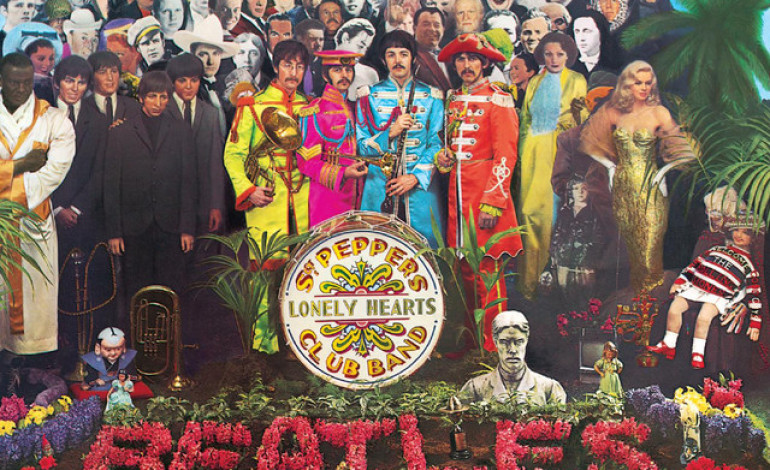
A pair of French horns featured on The Beatles’ legendary 1967 album ‘Sgt. Pepper’s Lonely Hearts Club Band’ have been donated to the Liverpool Beatles Museum. The instruments once belonged to musicians Tony Randall and John Burden and were unveiled during a special event attended by their families on Thursday morning.
The donation of Randall’s French horn by his daughter encouraged the museum to reach out to the family of John Burden, who also played French horn on the album. Relatives of the two attended the ceremony, travelling to Liverpool from Ireland and the US, with members of the Liverpool Philharmonic Orchestra performing the same parts performed by Burden and Randall on the album’s opener, ‘Sgt Pepper’s Lonely Hearts Club Band’.
Tim Burden, John’s son, was interviewed by ITV, and said: “It’s something we as a family are all so proud of. Growing up, it’s such a cool thing to think that your dad was part of this iconic album, and now it’s being displayed in this wonderful museum.”
Paul McCartney and George Martin are often credited for the album’s unique feel, but session musicians like Randall and Burden were instrumental in bringing its sound to life. Burden later revealed how McCartney would hum melodies, which he then transcribed into sheet music that the other horn players could then read.
“It was amazing to see Paul so hands-on with the overdubbing process,” Burden recalled before his death in 2010. “They didn’t really know what they wanted, but Paul had this incredible vision that came to life as we worked together.”
Randall enjoyed a distinguished career beyond his work with the Beatles. He conducted the Royal Philharmonic Orchestra and taught brass at the London College of Music. Burden’s life followed a similar path, playing in orchestra’s before moving into teaching, working at the Trinity College of Music.
The brass sections on ‘Sgt. Pepper’ helped shape the album’s distinct music hall style, giving tracks like ‘She’s Leaving Home’ their old-timey charm. Affectionately known as ‘Pepper’ to some fans, the record is widely recognised as one of the most innovative of its time, and effectively ended the “Beatles vs. Beach Boys” debate.
George Martin, one of the few bestowed with the title of “The Fifth Beatle,” was pivotal in blending classical and pop elements, using his traditional musical background. At the time, the album’s scale was immense, with more than 40 musicians contributing to its standout track, “A Day in the Life.” The album was the most expensive album ever recorded at the time, and took over 700 hours to complete.
The Beatles remain Liverpool’s most famous sons, and their legacy continues to boost the city’s economy. In 2015, the BBC reported that Beatles tourism brought in £82 million annually and supported over 2300 local jobs. Though the report is relatively old, the appeal of the Beatles hasn’t dwindled, with the band nominated for two Grammy’s at the upcoming 2025 awards for their song ‘Now and Then’, as well as a nomination at this years BRIT Awards for the same song.
The Beatles Story museum, spread across three floors, is filled with memorabilia, from Shea Stadium seats to Hamburg-era instruments. The new additions of Randall and Burden’s French horns honour the unsung heroes behind the Fab Four, who helped achieve their timeless sound.
What a great morning, the Philharmonic were fab, and it was lovely to chat to the family of Tony Randell and hear their memories of the talented musician. Well done Roag. pic.twitter.com/CjAs9mOWPB
— Paul Sudbury (@PaulSudbury1) January 23, 2025
One attendee at the unveiling posted on social media: “What a great morning! The Philharmonic were fab, and it was lovely to chat with the families of Tony Randall and John Burden.”
That two French horns from an album released nearly 60 years ago could draw such attention speaks volumes about The Beatles’ enduring appeal. The donation celebrates not only the genre-defying album the instruments appeared on, but also all of the musicians who gave the Fab Four the foundations on which to shine.
